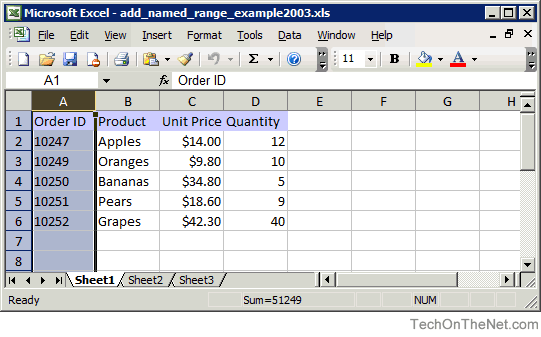


0 a = (y2 - y1) / (x2 - x1) b = y1 - a * x1 print ('slope: ', a) print ('intercept: ', b) Using a function.
#Alter a named range in excel for mac simulator
A C sweep at operating point: Here we use the simulator to sweep frequency (rather than DC voltage). Can be used for anything that can be measured with a horizontal and vertical length measurement, like driveways, roofs, stairways, gable walls, etc. One nice LTSpice feature is that we can use the LTSpice sche-matics editor to implement the PFPM model generators and the PFPM model. Electronics: LTspice - Measuring the resonant frequencyHelpful? Please support me on Patreon: With the help of some external components, an op amp, which is an active circuit element, can perform mathematical operations such as addition, subtraction, multiplication, division, differentiation and integration. So, if you want a switching regulator (boost) to generate 12V at 1A from 3V and choose the LTC1872, simple open the file 1872. I'm using LTspice on Mac, just entering netlists. This is handy for finding -3 dB location, Vgs threshold, etc. To show this, let us create a non-ideal version of one of the circuits from lab 2, shown in Figure 3. As you can see from the simulation, I have the. Most of the time you have VTO with a -6 mV/K slope. To display the cursors, right click over the name of the waveform, in this case V(n002) and then left click on 1st and 2nd. Hence it is called a s dual slope A to D converter. The gate and field oxide thicknesses and junction depths are inferred from the Simulation Results in LTspice, Experimental Results in Excel Using the Kiethley 2450 Source Meter to measure IV Curves: VGS = 1. The Calculator function in cadence can be used to calculate functions of waveforms, for example, derivatives. The Filter is a collection of filters: analog passive (names marked with a terminating _LC ), analog active, infinite impulse response (names marked with a terminating _IIR ), and finite impulse response filters (several are listed, each have something the others don't), all grouped into a single library file, for easy access. Discover the fast, easy, accurate way to measure level and slope. the two vertical white lines are the cursors and the values indicated below. Attribute Editor (CTRL R-click on the transistor) allows attributes with Vis. The percent slope in turn is an easy arithmetic step forward from the value of the slope itself. The slope and the intercept are then combined to provide the equation of the line in slope intercept form ("y=mx+b"). The woofer dipole with D=19" has its first peak ideally at 357 Hz and transitions into the 6 dB/oct slope somewhat below this frequency.


 0 kommentar(er)
0 kommentar(er)
